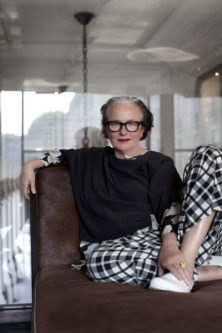The memory of the spoken word can last a long time. I can still remember words that were said to me from eight years ago by people I have lost total contact with. Though their sincerity or forcefulness may have faded, the moment in which they were created can never be forgotten.
Words are different from actions. While behavioral tendencies can be altered over time causing you to forget past instances, words, on the other hand, are like disgusting coconut water stains. No matter how much you think they have disappeared they remain there, serving as a constant reminder. In my lifetime I have learnt how words can affect how we behave. I, too, have made peace with the fact that at times you must be  willing to separate the words from the individual who said them because they might be as a result of a temporary situation or a personal reality. In other words, the depth of what is being said should be placed in the context of the
willing to separate the words from the individual who said them because they might be as a result of a temporary situation or a personal reality. In other words, the depth of what is being said should be placed in the context of the

person’s situation at that given time. There were two instances where words played an integral role in how I started to appreciate fashion as a young girl.
The first was during my preteen years. A primary school friend had asked me publicly during an Easter Day outing “Isn’t that the same outfit you wore before?” Naturally, at that time, I began to think she was implying that my inability to be clothed differently for each event represented poverty or lack of resources. I tried ever since to keenly ensure I wasn’t wearing the same outfit in the same company more than once.
The other instance was when the sister of a former partner of mine hurled the words: “One side of my shoe has more worth than your entire outfit.” The implication was that material possession aids in boosting someone else’s importance. I concealed my surprise with a headshake in agreement, cowardly, I suppose.
The memories of what was said to me in these two instances have stayed with me. Deep down inside I knew they were wrong. With the exception of my tertiary education, I had always attended private schools, my circles consisted mostly of those who would be considered to be privileged/affluent.
We were sheltered from the reality of poverty and socializing according to social status and wealth were the norm. I have heard stories about certain people not being invited to certain places and certain families not allowing marriages because of economic status. This, capped with our socioeconomic conditioning on how we appreciate wealth, trickled down into how we expressed it via our clothing. I understood how that could leave impressions on children and adolescents.
From a young age, I understood that the acquirement of the most expensive items meant instant adulation from the public, especially in Guyana. To this day this is what it still means for many. I think in some ways, we are all looking for validation despite how brave and proud we may portray ourselves to be. We kid ourselves into thinking that there is a sort of void that needs to be filled. Perhaps as a mechanism to deal with society and the need to be seen as ‘climbing the ladder’ or suppressing the reality of poverty that surrounds us.
This is the kind of concept that validated fashion and is still apparent in developing countries like Guyana. I am thankful that I have matured into a new realm of thinking.
Lidewij Edelkoort a Dutch trend forecaster who published an antifashion mandate through her agency Trend Union, has stated, “The fashion world is still working in a 20th-century mode, celebrating the individual, elevating the it-people, developing the exception… in a society hungry for consensus and altruism.” She believes, however, that fashion has been placed outside of society for the first time [in all places with the exception of Guyana in my opinion].
Signalling that today’s consumers are comfortable with independent choices and creating their own wardrobes, she wrote in her manifesto:
“They will share clothes amongst each other since ownership doesn’t mean a thing anymore. They will rent clothes, lend clothes, transform clothes and find clothes on the street.”
When I read this, I thought of the DJs who hyped crowds by asking them to raise their hands if they were in their own clothes; those who praised girls who did not borrow another girl’s clothing.
Not everyone will be able to move away from conspicuous consumption. For many it is an unorthodox strategy, especially in places where poverty is scorned and mocked.
People in European countries and North America also tend to be more concerned with how their clothing is being produced and who is producing it. They look at the environmental impact of fast fashion has before consuming.
I suppose this is how policies and politics influence fashion. Even though Guyana boosts of being a green economy, by nature we sustain and validate ourselves through over consumption not just in the way we dress but in all other aspects where consumption is concerned eg Christmas household splurging.
Like I said, we built our validation system on our own and though Edelkoort’s forecast may be true, it will be a while before the masses change the way they consume. As people, we ought to be exploring why it is that we constantly validate through material possession.








